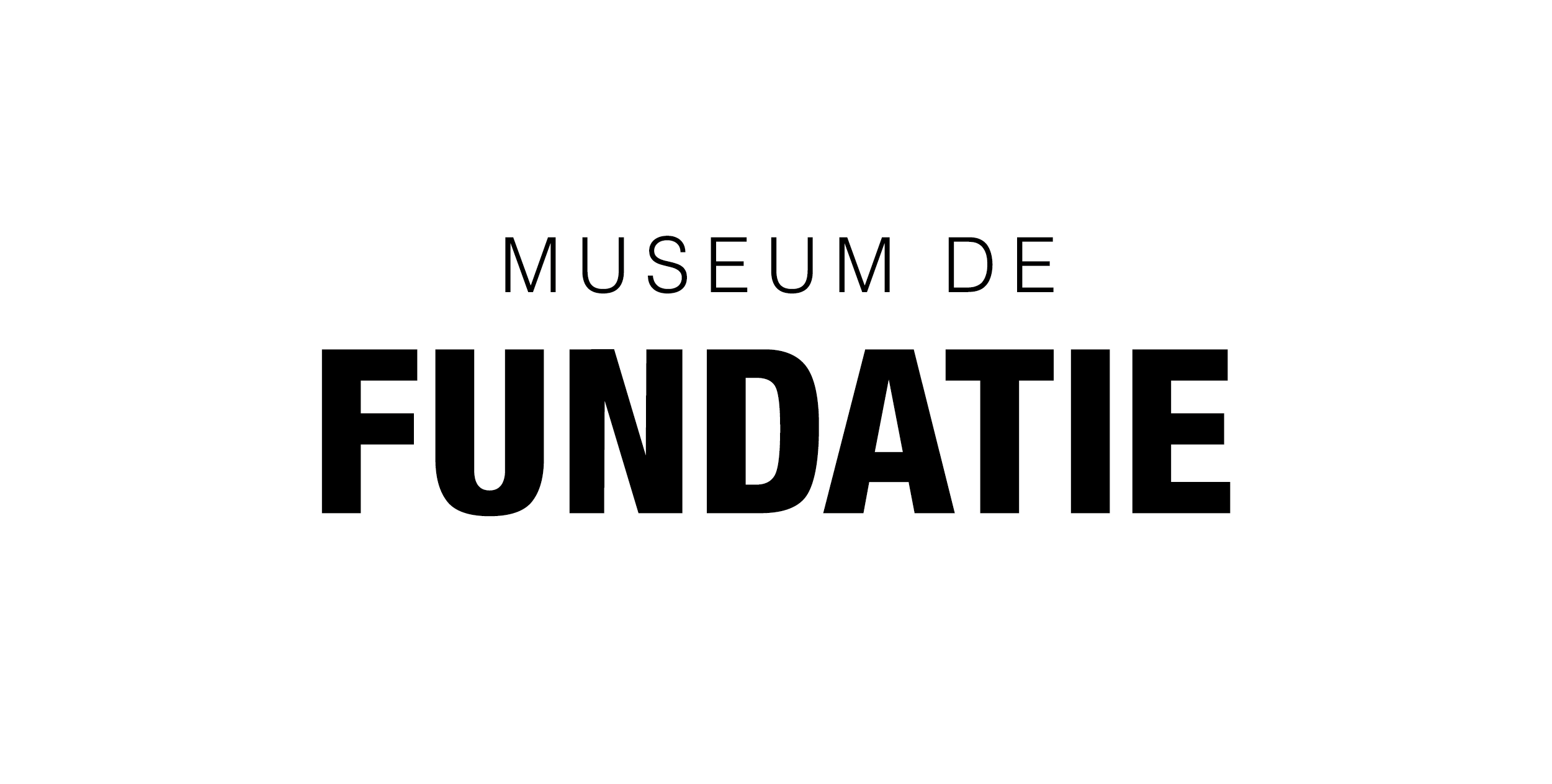
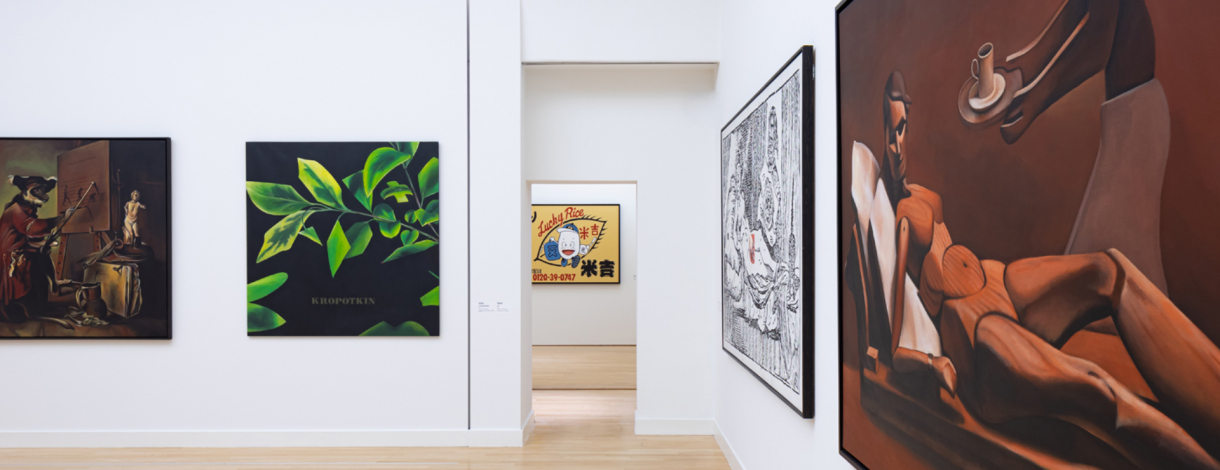
- From: 18 december 2021
- Through: 26 june 2022
- Location: Museum de Fundatie
ROB SCHOLTE - REPRODUCTION OBLIGED
Rob Scholte (b. 1958, Amsterdam) is the king of copyright. His paintings are based on images from fine art and advertising, and from everyday life. He shows no shame in taking existing images and appropriating them with skilful additions, alterations and shifts in context, making unlikely connections and juggling with meanings. Originality and rights of ownership apparently mean nothing to him. Reproduction in all its forms is the defining feature of Scholte’s art, and it is reproduction that ensures his work reaches a wide audience. ‘The most reproduced artwork is [thus] the most important’, he once said. Museum de Fundatie will be staging a major retrospective of his paintings.
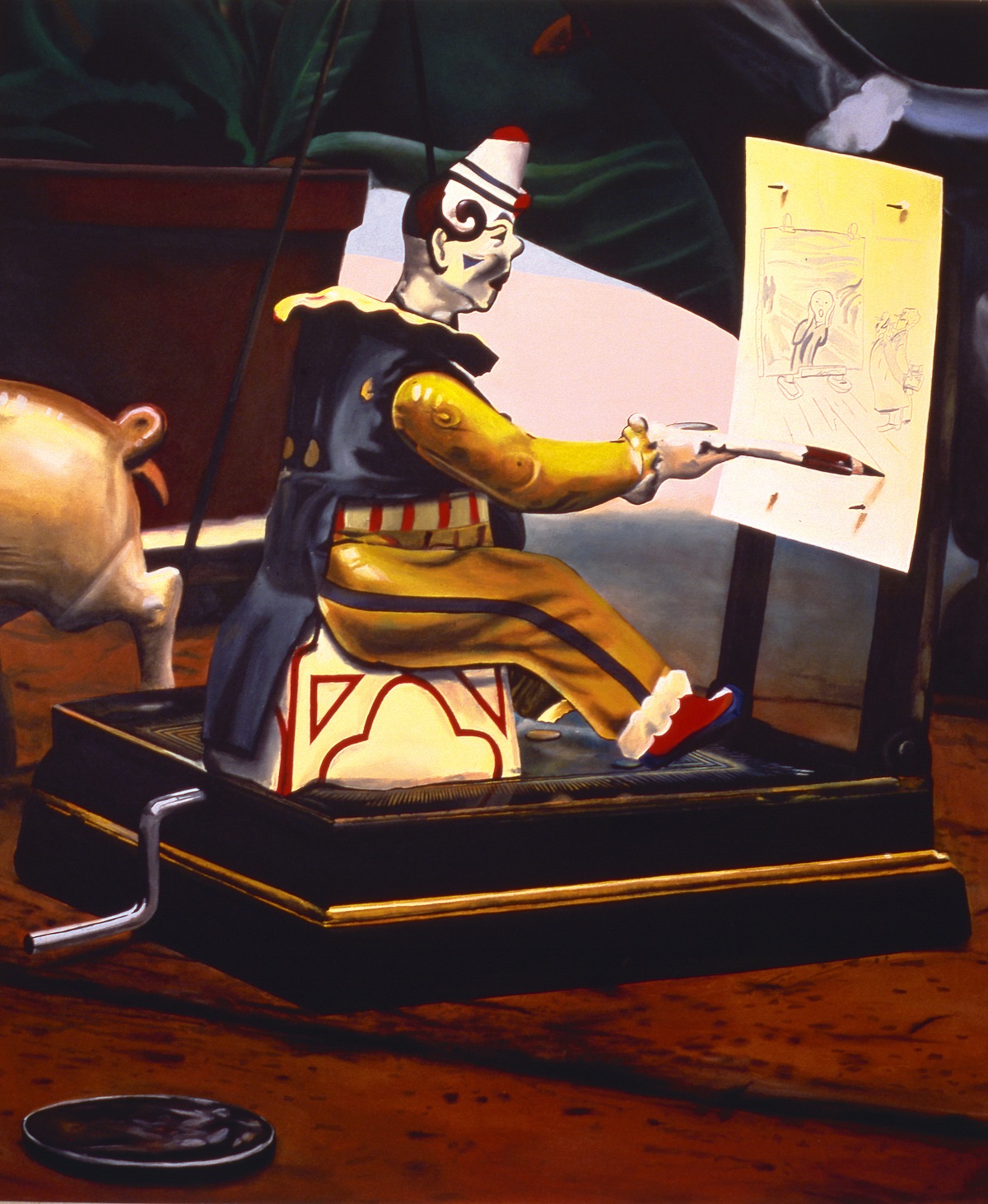
Rob Scholte, The Scream, 1985, acrylic on canvas, 180 x 150 cm, courtesy Städel Museum, collectie Städelsches Kunstinstitut, Frankfurt am Main, © Pictoright Amsterdam 2021.
Scholte is the quintessential artist of the turbulent and notorious 1980s. His paintings helped ensure a renewed appreciation of figurative painting in the wake of modernism, though Scholte does not in any way reject abstraction. His art is as idealistic as it is commercial, both alternatively critical and coolly kitschy, ironic and deadly serious, and above all – like a common thread running through all his work – consistently paradoxical. Scholte is indisputably the most-talked-about living Dutch artist, part of the international postmodernist movement. Historical subjects, literary references, irony, playing with truth and lies, a lack of style, even discordant quotations from ‘high’ and ‘low’ culture – all these things are characteristic of the 21st-century zeitgeist. Scholte marks the transition from modern to postmodern like no other artist. His paintings appear old-fashioned compared to a computer, but they thrive on the worldwide web we call the internet.
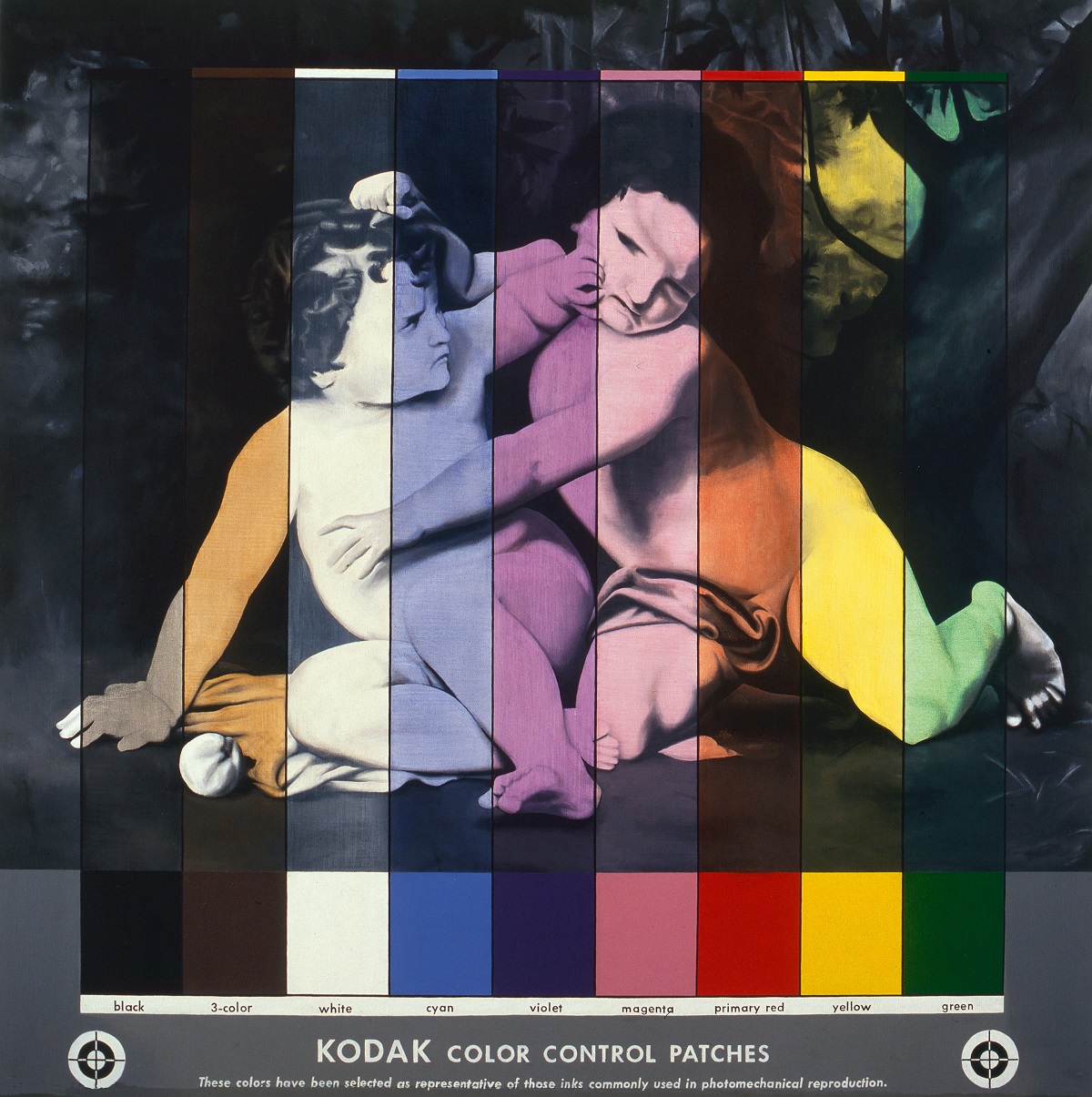
Rob Scholte, Reproduction Obliged, 1986, acrylic on canvas 175 x 175 cm, private collection Berlin, © Pictoright Amsterdam 2021.
In Scholte’s painting Reproduction Obliged, from which the title of the exhibition is taken, two coloured cherubs fight over a black-and-white apple, and the words ‘The colors have been selected as representative of those inks commonly used in photomechanical reproduction’ appear on the Kodak colour control patches painted beneath them. Scholte further explores this idea, which can in fact be seen as the basic premise of his art. It is not only Scholte’s style that is flat, without any personal signature, his colours are also chosen on the basis of inks commonly used in reproduction. By painting in this way, Scholte continually reinvents the printing press, layer upon layer, from light to dark, then from dark to light and back again, each time more precisely and with more definition. He calls this process ‘painting God into it’. His subjects are often universal and easily read. They refer to the mass media familiar to all of us, though Scholte is also no stranger to tradition and religion.

Rob Scholte, Cover, 1986, acrylic and goldpaint on canvas, 171,5 x 129,5 cm, collection SCHUNCK, municipality of Heerlen, long-term loan Rijksdienst voor het Cultureel Erfgoed, photo: Tim Koster, RCE, © Pictoright Amsterdam 2021.
Scholte studied for a short time at Academie Minerva in Groningen and at the Vrije Academie in The Hague (1975-1976), before graduating from the Rietveld Academy in Amsterdam in Audiovisual Design under the tutelage of Jos Houweling (1977-1981). He took part in the opening show at the Amsterdam artist-run squat W139 (1982), where later that same year he and Sandra Derks exhibited the huge ‘Rom 87’, sophisticated variations on a children’s colouring book bought in a popular chainstore. In the years that followed he caused one sensation after another, at The Living Room gallery, for example, in Amsterdam’s Jordaan neighbourhood, where he showed meticulously painted works that bucked all the prevailing trends at the time.
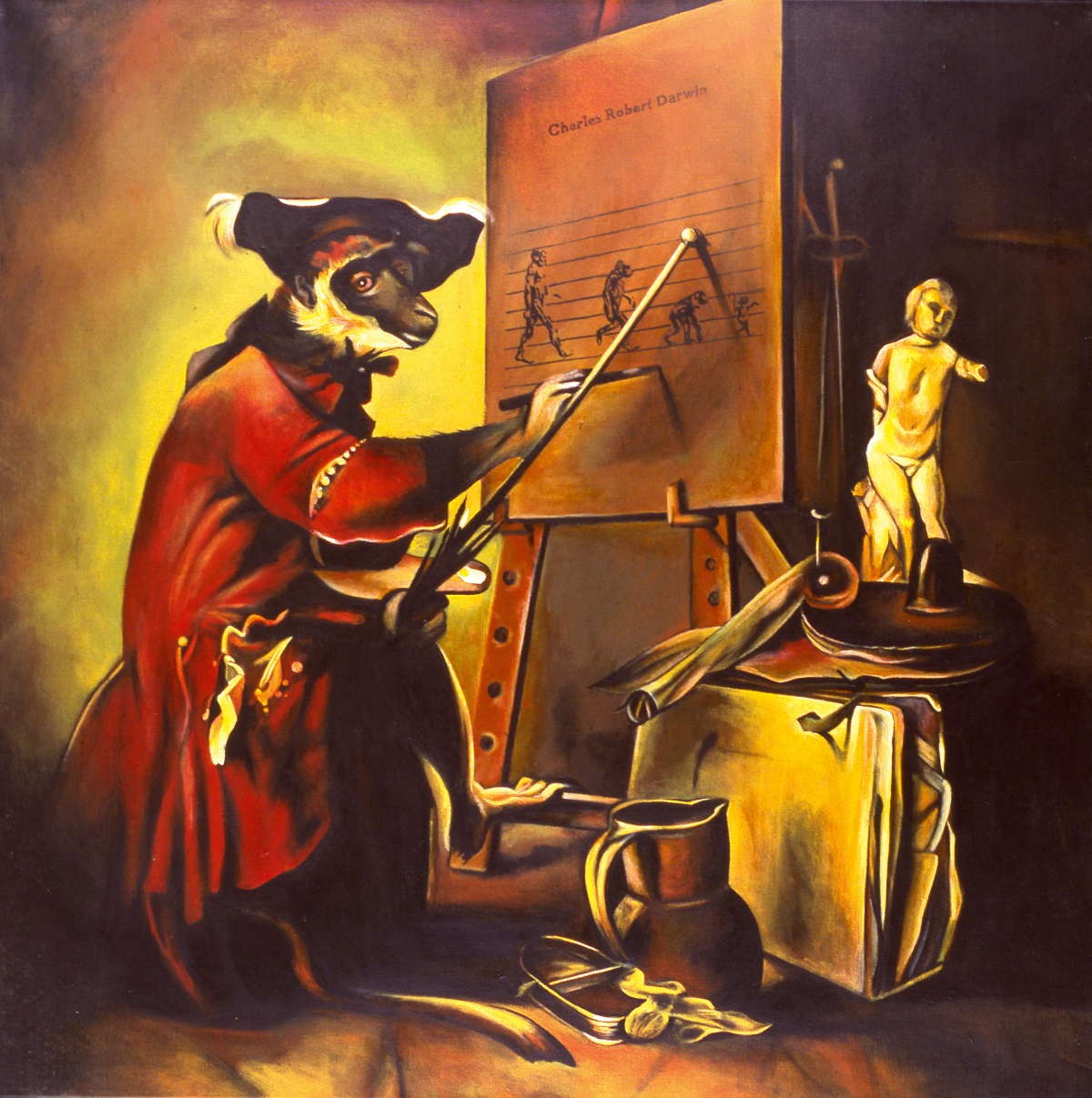
Rob Scholte, On the Origin of Species, 1988, acrylic on canvas,150 x 150 cm, collection Museum Boijmans Van Beuningen, Rotterdam, © Pictoright Amsterdam 2021.
Scholte soon became part of the ‘society scene’ in the Netherlands, attracting constant publicity. His career as an artist took off like a rocket, both at home and abroad, and he collaborated with fellow artists from other countries like Georg Dokoupil and Peter Schuyff. He took part in the Sao Paulo biennial in 1983, and showed ‘The Scream’ at documenta in Kassel in 1987. Shortly afterwards he became professor of painting at the University of Kassel, and then exhibited San Marco kitsch like ‘No Expo’ in the Dutch pavilion at the Venice Biennale of 1990. A year later he received his largest commission to date: a 1200 m2 painting for the replica Huis ten Bosch palace in Nagasaki, which he gave the title ‘Après nous le Déluge’ (1991). The project was literally made for him: the only original in a town full of replicas of Dutch architecture in a country like Japan, which like Scholte owes its success partly to its own unique interpretation of copyright. He completed the huge project in 1995, but in the meantime he had fallen victim to a bomb attack (on 24 November 1994). A year later he exhibited his bombed out BMW on the first floor of artists’ society Arti et Amicitiae. For four years Scholte and a number of assistants had worked on the acrylic wall and ceiling paintings, whose iconography refers to the constant repetition of war as the regrettable driver of world history, inspired by his large archive of historical art and media images.
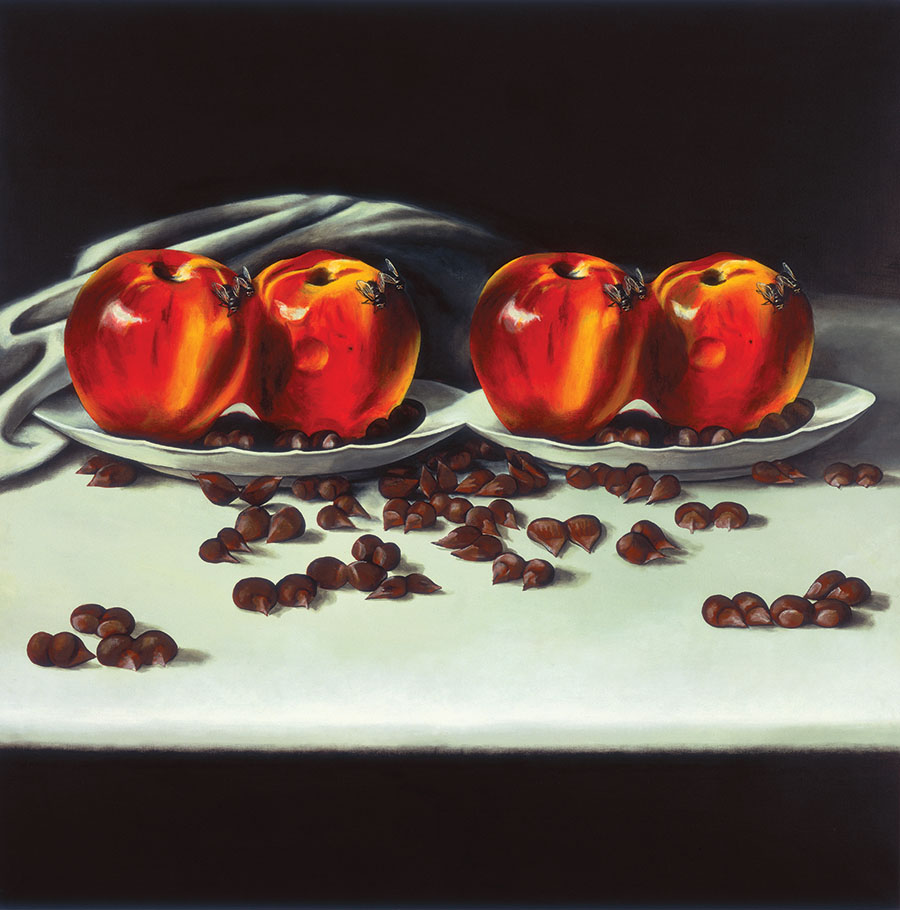 Rob Scholte, Forbidden Fruit, 1985, acrylic on canvas, 200 x 200 cm, collection Stedelijk Museum Amsterdam. © Pictoright Amsterdam 2021.
Rob Scholte, Forbidden Fruit, 1985, acrylic on canvas, 200 x 200 cm, collection Stedelijk Museum Amsterdam. © Pictoright Amsterdam 2021.
Things then went rather quiet around Rob Scholte – a deliberate choice on his part. He had moved to Brussels in 1988, where he lived until he left for Tenerife in 1995, and did not come back to the Netherlands until 2003. Four years after his return he moved into the former post office in Den Helder (2007). There he opened the Rob Scholte Museum (2013), but the local authority had other plans for the building. The police cleared out Scholte’s home, studio and museum on 17 April 2018, and legal proceedings in the case are ongoing.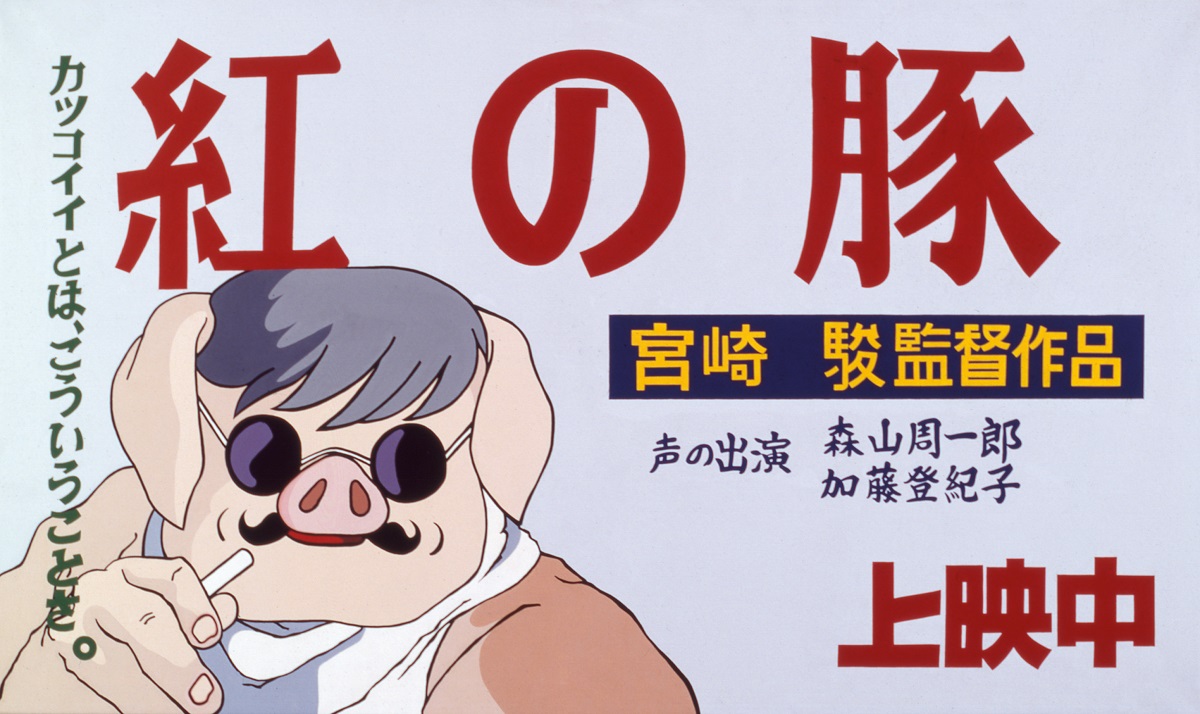
Rob Scholte, Question Mark, 1993, acrylic on canvas, 120 x 203 cm, collection SCHUNCK, municipality of Heerlen, photo: Edo Kuipers, © Pictoright Amsterdam 2021.
Museum de Fundatie has previously hosted two Scholte exhibitions: ‘Silk Cut’ (2011), a facelift of the classical period rooms at Nijenhuis Castle and the ‘Embroidery Show’ (2016), featuring thousands of embroideries by anonymous makers that Scholte had purchased, reversed and signed. Improbable as it sounds, Scholte’s last retrospective in the Netherlands took place over 30 years ago, at Museum Boymans-van Beuningen (1988). And so it is high time for another. Therefore Museum de Fundatie in Zwolle will be hosting a retrospective of Rob Scholte’s paintings, with many works on loan from museums and private collections in the Netherlands and abroad, plus some new work as the icing on the cake.
- From: 18 Dec 2021
- Through: 26 Jun 2022
- Location: Museum de Fundatie
Also check these exhibitions
-
JONATHAN VAN DOORNUM
.png)
Dark There, Joyful Here
Museum de Fundatie -
Sculpture garden
.png)
near Kasteel het Nijenhuis
Kasteel Het Nijenhuis -
Fundatie Collection: REMIX
.png)
-
Fundatie Collection: REMIX
.png)
New perspectives in the castle
Kasteel Het Nijenhuis -
PROTO: Jack Brandsma & Hester Oerlemans & students
.jpg)
(RE)DO
Kasteel Het Nijenhuis -
Fundatie Collectie: 80 years of freedom
.png)
-
Henk Heideveld
.jpg)
50 Years of Artistry
Museum de Fundatie -
Dutch impressionism
.png)
from Israels to Ansingh
Museum de Fundatie
.png)
.jpg)
.jpg)